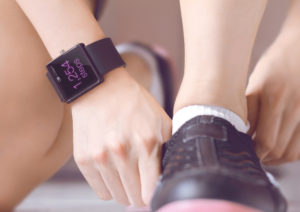 Those with high blood pressure may want to up their step count, as new research shows how important walking is in the prevention of hypertension. The study presented at the American College of Cardiology’s Annual Scientific Session Together with World Congress of Cardiology is one of the first to use commercially available wearable devices to track physical activity in a large group of people.
Those with high blood pressure may want to up their step count, as new research shows how important walking is in the prevention of hypertension. The study presented at the American College of Cardiology’s Annual Scientific Session Together with World Congress of Cardiology is one of the first to use commercially available wearable devices to track physical activity in a large group of people.
Nearly half of U.S. adults are estimated to have high blood pressure, and many of those are not aware that they even have it. High blood pressure is often called “the silent killer” because, over time, it can weaken the heart, blood vessels, kidneys, and other parts of the body with many people unaware they even have it.
Advertisement
Smartwatches are sometimes seen as a fun gimmick, but this new research shows the potential they have for monitoring people in the context of daily life outside of a health care setting or research center. For the purpose of this study titled the Framingham Heart Study, researchers analyzed data from 638 study participants who were asked to wear an Apple Watch daily and record their blood pressure at home weekly.
Throughout the study, it was noted that participants’ average systolic blood pressure was 122 mm Hg and average diastolic blood pressure was 76 mm Hg. These levels are considered normal to slightly elevated according to the 2017 ACC/AHA High Blood Pressure in Adults guideline. Body Mass Index (BMI) was also taken into account for each participant in the study, which could suggest that it might be a mediating factor in the relationship between physical activity and blood pressure. However, the study was not designed to discern whether BMI affects step count or the other way around.
The study’s lead author, Mayank Sardana, MD, spoke about the research saying, “Measuring habitual physical activity in community-based settings in this way distinguishes our study from prior studies that have looked at either self-reported physical activity or used accelerometers to measure daily activity for only a short amount of time, usually about a week.”
Physical Activity Can Lower Blood Pressure
Researchers found that their work aligned with previous research suggesting that physical activity can help lower blood pressure. After accounting for demographic factors, participants were found to have a systolic blood pressure of about 0.45 points lower for every 1,000 daily steps taken, meaning that a person taking 10,000 steps daily would have a systolic blood pressure 2.25 points lower than a person taking just 5,000 steps daily, on average. For many people, this could make the difference between blood pressure that is considered elevated or normal, and greatly increase their heart health.
“This study solidifies our understanding of the relationship between physical activity and blood pressure and raises the possibility that obesity or body mass index accounts for a lot of that relationship,” Sardana said. “Going forward, it would be useful to look at how smart devices might be leveraged to promote physical activity, reduce the burden of obesity and potentially reduce blood pressure.”
The findings of this study help to support the role of wearable devices in epidemiology research to enhance the understanding of the relationship between cardiovascular risk factors and cardiovascular disease. If more studies can continue to use these simple yet effective means of recording data, researchers believe they may find preventative measures for many types of illness more easily.
